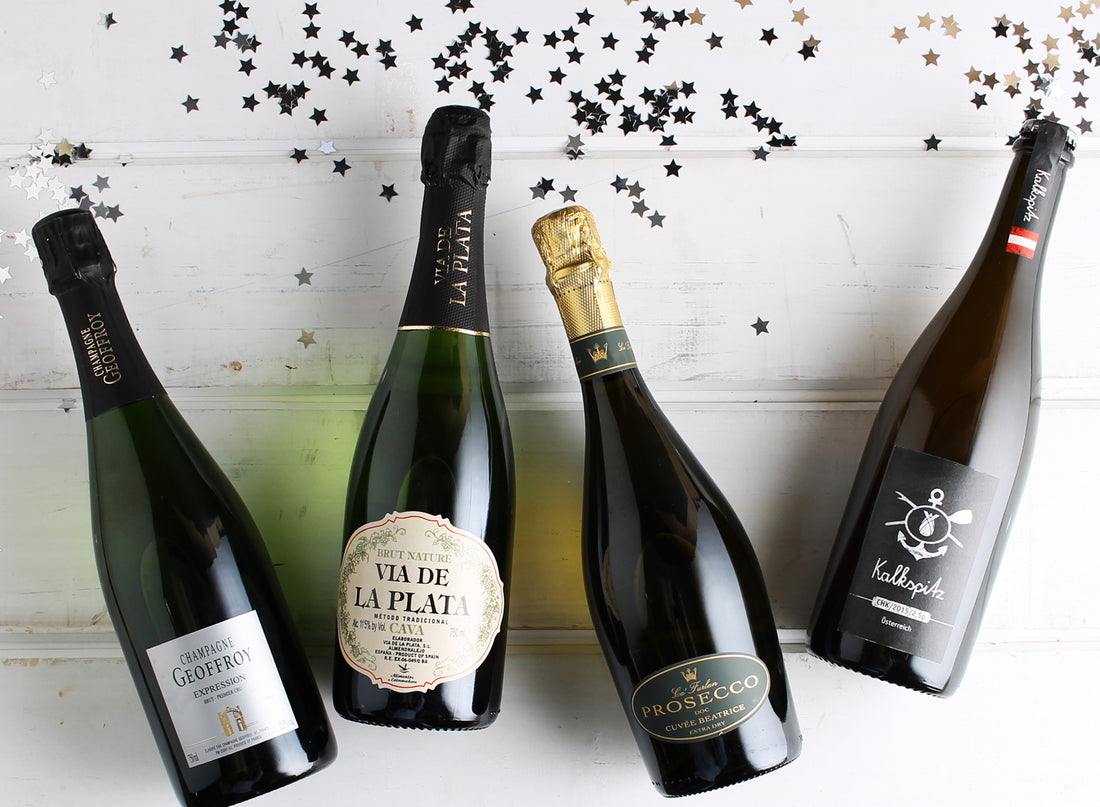
Traditional sparkling wine, including Champagne, involves an elaborate, intrusive and time-consuming process: A dose of sugar and yeast are added to very acidic base wine, and it’s all left in a bottle to age on its lees (spent yeast cells and such), usually for 15 months minimum, often for years. A second fermentation, wherein the yeast converts sugar to alcohol and carbon dioxide—hence the bubbles—creates the sparkling texture.
Pét-nat takes one big step out of this process: Rather than adding sugar and yeast to a finished base wine, the wine is put in bottle while still a bit sweet. Its fermentation continues in the bottle, and the wine becomes naturally sparkling. The naturel is supposed to denote that the same indigenous yeasts both fermented the grape juice and sparkled the wine, in one more or less continuous process. The argument behind pét-nat is that it can offer a purer interpretation of grape and place than the more willful winemaking involved in the Champagne process. That in turn has made it the methode du jour for a lot of naturalist winemakers.
Bubbly is made around the world using 3 main methods: Méthode Champenoise, Charmat, and Ancestrale from early-picked grapes from cooler climes. With high acid, bubbly is super food friendly too.
Effervescence has been observed in wine throughout history. Yet the science behind the bubbles was not understood until the 18th & 19th centuries. Cold weather in the fall can halt the fermentation process, leaving behind residual sugars and dormant yeasts in the bottle. In warmer spring weather those sugars and yeasts would re-ferment causing carbonation in each bottle—voila bubbles! Sugar + Yeast = Alcohol + CO2. Bubbles in sparkling wine are measured in either ‘bars’ (total gas pressure) or ‘atmospheres’ (just CO2 pressure) or ‘PSI’s’. Champagne is 70-90 PSI (pounds per square inch).
Champagne
Champagne—that is, real Champagne—is produced only in the Champagne region of France, and it’s pretty much universally hailed as the greatest sparkling wine in the world. It’s effervescent and lively, and at the same time it offers tremendous complexity and finesse.
Méthode Champenoise: a Laborious method whereby the secondary fermentation and aging take place in the bottle. This is the method made famous in Champagne. There are many steps in this process: riddling, disgorgement and dosage. (AKA Méthode Traditionnelle/Classico).Charmat Method:
Prosecco
Charmat Method: Simple method whereby the secondary fermentation takes place in bulk tanks, and is bottled under pressure. This method is used for Prosecco in particular.
Méthode Ancestral: OG method whereby the wine is sent to bottle still fermenting (so the C02 gets trapped). Wines are not disgorged typically and can be cloudy and off-dry (or not). (AKA Pét-Nat).
Subscribe to our newsletter
Enter Your Contact Details to Get The Latest News & Trends to Help Boost Your Business.



